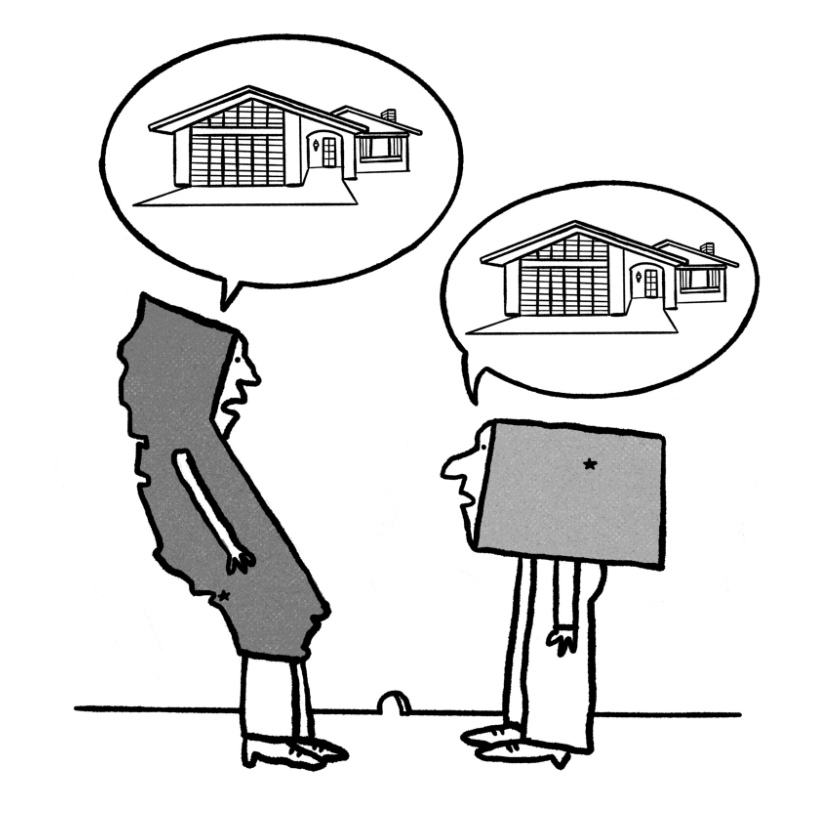
Illustration: Jonathan Rosen
Orange County, Colorado: How a California homebuilder remade the Interior West
Los Angeles Review of Architecture, 19 February 2024
“Framing itself wasn’t new, but its technique was. Previously, framers had worked upright: They put up the home’s corner posts and then built the walls by ‘toe-nailing’ one two-by-four at a time, driving small nails at an angle through the stud and into the floor. The Californians instead lined up two-by-fours and, working on the ground, built freestanding walls they called ‘plates.’ They stood up the plates, nailed them into the floor deck, and instantly the thing started to look like a house.
They derided the old, in situ framing method as ‘New Jersey farmer framing,’ even as they admitted that it required more skill. ‘Toe-nailing is working top-down, getting two little three-inch nails through the stud and not hitting your thumb or ripping the wood up and keeping it on the line and everything,’ my dad says. ‘It’s hard. Whereas we could just get a handful of nails, line it up, put our foot on it, and boom, boom, done.’”
Los Angeles Review of Architecture, 19 February 2024
“Framing itself wasn’t new, but its technique was. Previously, framers had worked upright: They put up the home’s corner posts and then built the walls by ‘toe-nailing’ one two-by-four at a time, driving small nails at an angle through the stud and into the floor. The Californians instead lined up two-by-fours and, working on the ground, built freestanding walls they called ‘plates.’ They stood up the plates, nailed them into the floor deck, and instantly the thing started to look like a house.
They derided the old, in situ framing method as ‘New Jersey farmer framing,’ even as they admitted that it required more skill. ‘Toe-nailing is working top-down, getting two little three-inch nails through the stud and not hitting your thumb or ripping the wood up and keeping it on the line and everything,’ my dad says. ‘It’s hard. Whereas we could just get a handful of nails, line it up, put our foot on it, and boom, boom, done.’”

